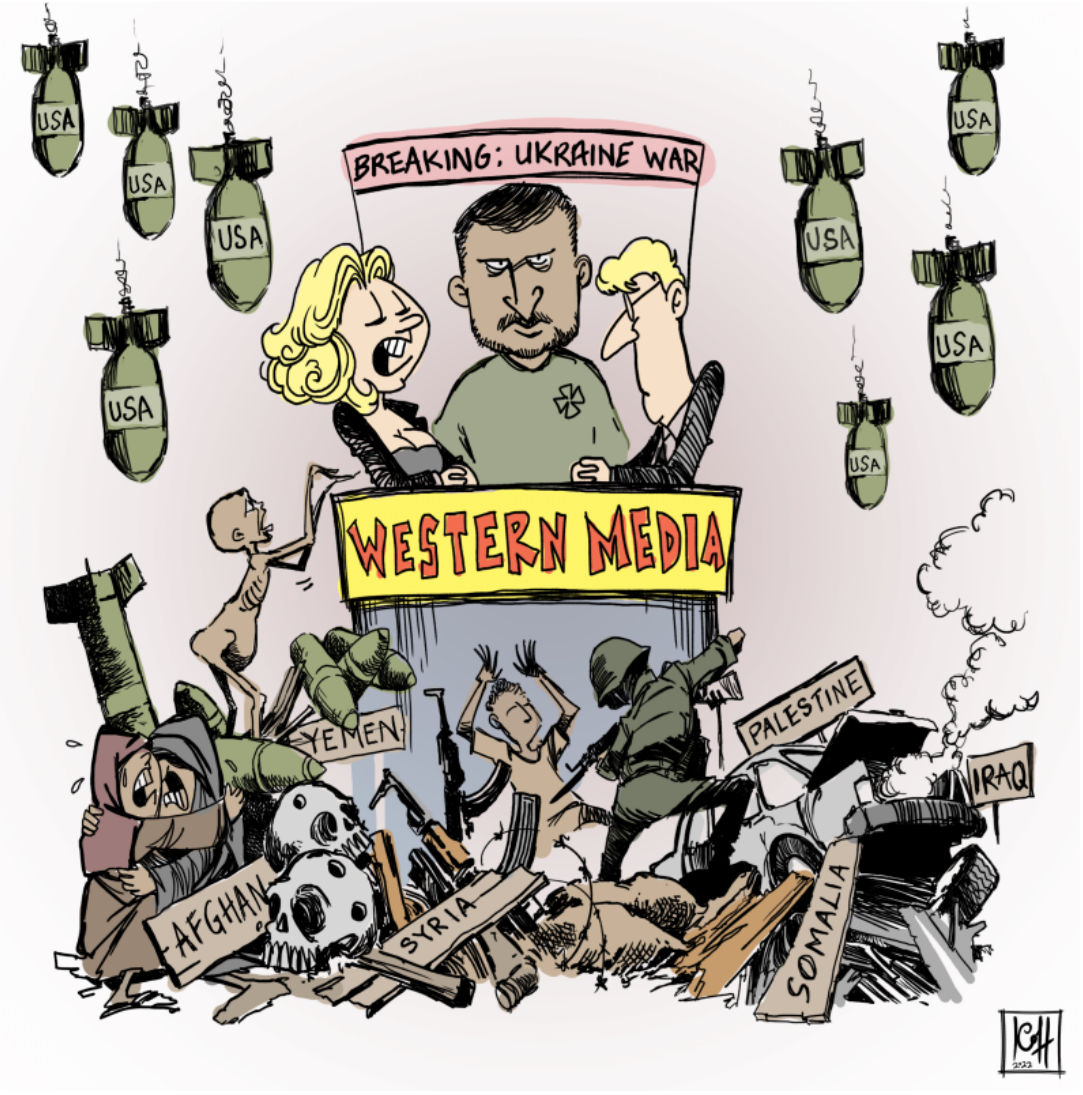As we all know, almost all Western journalists and so-called ‘military experts’ are party soldiers in the Ukraine war and spread the respective party line, which in most cases means the transatlantic narrative dictated by Washington. If their ‘reports’ and ‘analyses’ had materialised, the Russians and their ‘Bourbaki army’ would have been completely defeated by Ukraine and the NATO behind it two years ago. (On the term ‘Bourbaki Army’: After the catastrophic defeat in the Battle of the Lisaine against the Germans in 1871, the French troops were confronted with harsh winter conditions, severe shortages of food and supplies and low morale; many soldiers suffered from frostbite, hunger and exhaustion. This defeat forced the army commanded by General Charles Denis Bourbaki to make a humiliating retreat across the Swiss border, where they eventually found asylum).
The inclined reader of the propaganda media may therefore ask himself how he can get as objective a picture as possible of the warlike events in Ukraine (and Russia).
The best way is to search for the relevant official original sources of information as well as other original sources from the war zone itself. These include the information bulletins of the ministries of defence: Both the Ukrainian and Russian Ministries of Defence regularly issue such bulletins. In addition, Ukrainian commanders-in-chief also give statements and interviews to domestic and foreign media, while Russian generals tend to remain silent and concentrate on their military work.
Of course, you can’t bank on their reliability, but they show certain trends and can be confirmed or refuted by other sources. The Ukrainians publish more frequently, more colourfully and more emotionally than the Russians, who are more economical, more sober and more boring. If you compare the two directly, you realise that the Russians have long since lost the propaganda war. The Ukrainians and NATO, on the other hand, have the disadvantage that they have largely turned their backs on reality and their military policy is often guided by false, irrational or misinformed political decisions.
Distinguishing between fact and fake
Secondly, the respective Ukrainian, Russian and other military bloggers on Telegram can be used as sources of information. They analyse the official Ukrainian and Russian reports and compare them with information from other sources. This includes in particular the contributions of Ukrainian and Russian soldiers from the front. There are more reports from Ukrainian soldiers, who often give unvarnished accounts of the changes on the war front. They also tell us about their problems such as soldier shortages, lack of ammunition and fatigue. The reason for their strong presence is that Ukrainian soldiers – unlike their Russian counterparts – are allowed to take their mobile phones to the front. In their videos, for example, they show how they attack Russian tanks and infantry with drones and we learn in passing that these tanks have advanced ten kilometres compared to the previous week. When their mobile phone videos are geolocalised, we know that this is a fact and not a fake.
But much can also be learned from the Russian telegram and other channels, for example when they criticise the mistakes of commanders who sacrificed the lives of Russian soldiers through poorly prepared counter-offensives. The fact that these reports were accurate can often be learnt in retrospect when the officers responsible are released from their responsibilities.
A wealth of information
In general, bloggers, who are generally quite well informed and up to date, can be divided into three large groups.
Firstly, there are the pro-Ukrainian bloggers. Among these there are both reliable and unreliable ones. You can find out relatively quickly whether someone is unreliable – for example, if statements made there are later repeatedly refuted by facts. Sometimes there is also radio silence for a few days when the Ukrainian military authorities order the bloggers to remain silent.
Then there are the neutral bloggers who at least explicitly claim to be impartial. It only took me a few weeks to find out that most of them rely almost exclusively on Ukrainian sources. Nevertheless, you can still get useful information from them.
And finally, thirdly, there are the pro-Russian bloggers, who are more or less the mirror image of the pro-Ukrainian bloggers. This means that here, too, you have to find out which of them provide useful information, as opposed to those who mainly disinform.
All in all, all these bloggers provide a wealth of information that enables a fairly good assessment of the situation. In addition, there are also some excellent analysts on YouTube who describe themselves as neutral and who wade through the thicket of frontline reports and share their findings on a daily basis.
These include a young American military analyst with his YouTube channel ‘Weeb Union’. A Belarusian military analyst named Dima offers the same on his channel ‘Military Summary’. British analyst Alexander Mercouris scours Ukrainian, Russian and Western media and Telegram channels on a daily basis to provide a comprehensive picture that also takes into account geopolitical aspects influencing the war.
So to summarise, Telegram in particular, but also YouTube and Rumble, provide a wealth of up-to-date and fairly accurate information. The best thing about it is that it makes the ‘reporting’ of the mainstream media completely superfluous.

